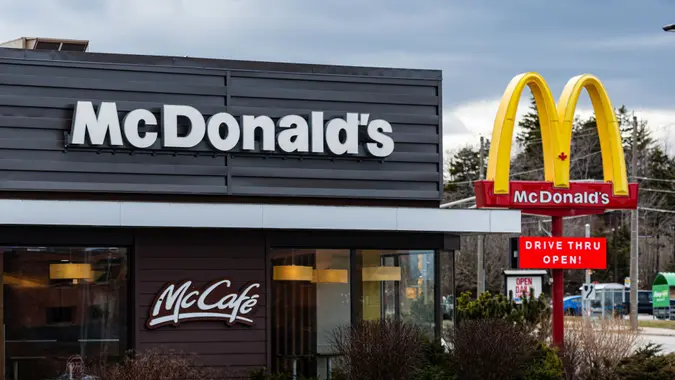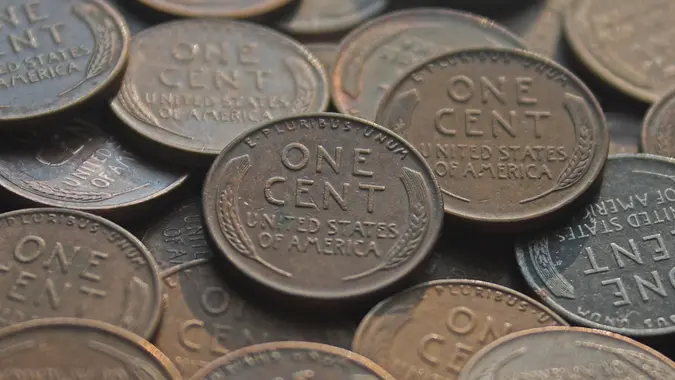I’m an Economist: 3 Reasons Harris’ Opportunity Economy Would Help the Middle Class

Commitment to Our Readers
GOBankingRates' editorial team is committed to bringing you unbiased reviews and information. We use data-driven methodologies to evaluate financial products and services - our reviews and ratings are not influenced by advertisers. You can read more about our editorial guidelines and our products and services review methodology.

20 Years
Helping You Live Richer

Reviewed
by Experts

Trusted by
Millions of Readers
In her bid for a promotion to the top spot in the Oval Office, Vice President Kamala Harris rolled out her “Opportunity Economy” plan to help relieve the financial pressures on the lower and middle classes. The plan was a smorgasbord of proposals to address everything from the high price of food and medications to expanding tax credits for small businesses and parents and significant home-buying assistance.
The big question is whether these actually would work to combat the financial hammering the middle class is taking. GOBankingRates spoke to economist Stephen Kates, CFP and principal financial analyst at RetireGuide.com and Annuity.org, for his insights into three of the potentially most impactful of Harris’ proposals.
Providing $25,000 in Down-Payment Assistance
It’s not shocking to anybody that home prices in recent years are, well, shocking. In fact, a recent study by Creditnews.com found that factors such as inflation and high interest rates have priced the middle class out of buying a home in 48 of America’s 100 largest metropolitan areas. Five years ago, only nine of these areas were considered unaffordable. In addition, data from the Atlanta Federal Reserve Bank showed that to buy an average home in today’s market, a typical American household would have to spend 43.8% of their income.
“Purchasing a home requires overcoming two challenges,” said Kates. “Accruing the down payment and maintaining the cash flow of the monthly payments. The $25,000 assistance [Harris is proposing] would close the gap for many borrowers.” Ha added that if the assistance is paired with FHA loans, which only require between a 3% to 10% down payment, many middle-class borrowers may become immediately eligible for a mortgage. “Lower or more stable home prices, as well as lower mortgage rates, could make monthly payments approachable again,” he said.
However, there is a potential downside to the plan, Kates said. “The only downside of the assistance plan would be the upward pressure it would apply to home prices. Adding supplemental money into the market and increasing the volume of buyers [would] cause prices to increase in certain segments of the housing market.”
Construction of 3 Million New Housing Units in Four Years
For decades before 2006 and the Great Recession that began in 2008, housing boomed, with construction increasing. Then came the crash, and with it, a pull back in housing starts. “Since the 2008 Great Financial Crisis, home building in the U.S. has been sluggish and well below the long-term trend of the decades prior,” said Kates. “We have chronically underbuilt new housing, and that has contributed to the higher home prices we see today.”
That, paired with middle class millennials’ demand for housing as they expand their families, said Kates, created a large demand and supply mismatch that has resulted in many in the middle class missing out on a cornerstone of the American Dream: owning a home.
Enter the 3 million new housing units Harris has called for. This, according to Kates, is the estimated undersupply that exists across the country, especially in the starter home market. He said this would alleviate some of the pressure on middle-class buyers competing for properties.
“Rapid implementation that allows builders to begin the process of breaking ground on new homes will be necessary,” Kates said. “The faster the new housing arrives, the more impactful it will be on housing prices and inflation measures.”
Tax Credits for Parents
The cost of child care is often one of a family’s most significant expenses. In fact, a 2023 report by the U.S. Department of Labor stated that child care can be as high as 19.3% of the median family income per child. This can quickly become untenable and impact other aspects of a family’s life. For instance, according to the U.S. Department of Commerce, 35% of families making less than $75,000 a year reduce their work to pay for child care.
“Child care is one of the largest expenses many young families have, sometimes even higher than their mortgage payments,” said Kates. “Easing this cost burden with higher tax credits would benefit many families across the country, with the greatest impact on those with low household income.”
This might help propel them into the middle class.
In addition, this proposal could help with an even more important goal: pulling children out of poverty.
Kates said, “During the pandemic, the increased Child Tax Credit, which was the model for this new proposal, was shown to reduce childhood poverty by nearly half.”
 Written by
Written by  Edited by
Edited by 

























